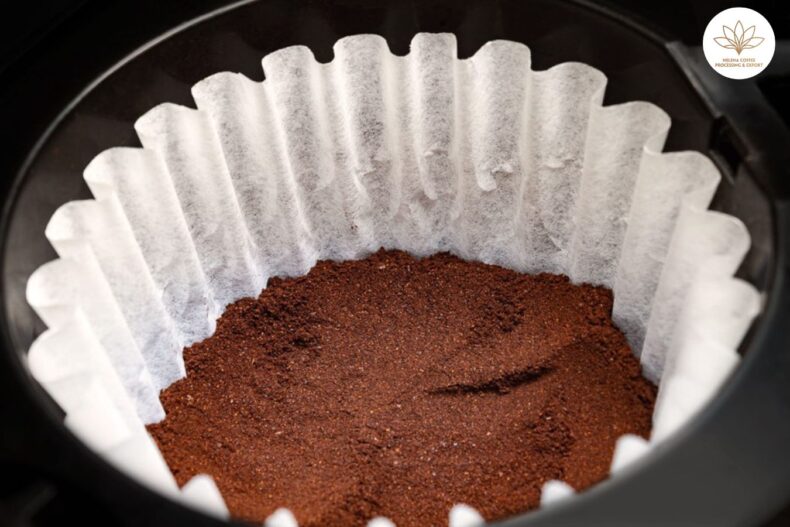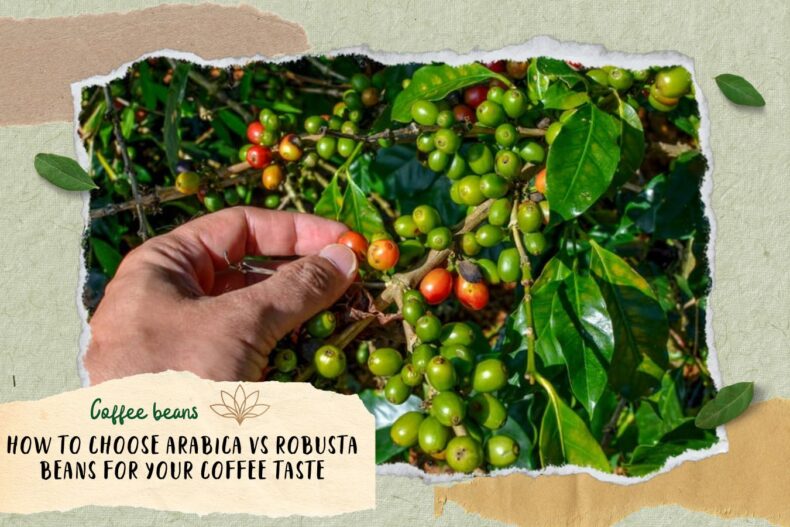
Definition of Arabica coffee

Arabica coffee, also known as “coffee,” has only 1 to 2% caffeine content. Arabica coffee trees prefer to live on high mountains. Arabica coffee is usually grown at altitudes between 1000 and 1490 meters. Mature coffee trees can be 4 to 6 meters tall. However, the maximum height the tree can reach is 15 meters.
Arabica coffee trees have small, dark green, oval leaves. The oval fruit is slightly distorted, each containing two coffee beans. There are two types of Arabica coffee, Moka coffee, and Catimor coffee.
These two types of coffee have a lovely aroma when roasted and ground.
Arabica has a sour taste mixed with mild bitterness, light brown watercolor, and clear amber color. Arabica coffee is the main ingredient of the most famous coffee brands globally. Arabica can also process many unique dishes and drinks.
The scent of Arabica is exquisite and noble; Arabica smells like syrup, fruity smell mixed with honey smell, toasted bread, the straw field at noon in summer … Arabica conquers the most connoisseurs.
Arabica market
After you have understood the definition of arabica coffee, you must imagine that this is the most economical species of any coffee plant. Arabica coffee accounts for 63% of all coffee production worldwide.
More interestingly, Arabica has many other names depending on the region, and you will meet them with entirely different characters. In Colombia, Arabica coffee is also known as Colombian Milds. They will again be Brazilian Milds when it comes from Brazil and Other Milds if it comes from other countries.
Thereby, it can be seen that Brazil and Colombia are the two central exporting countries of this coffee. Their coffee quality is also highly appreciated. Other exporting countries include Ethiopia, Vietnam, Mexico, Guatemala, Honduras, Peru, and India.
Enjoying coffee globally is usually coffee with relatively caffeine content, not too strong and bitter. Therefore, tea (Arabica) is valued higher than coffee (Coffea canephora or Coffea robusta).
Typically, a bag of coffee and tea (59kg) usually costs twice as much as a bag of black coffee.
Arabica coffee can be harvested after 3 to 4 years after planting. Arabica coffee plants prefer temperatures from 15-25 ° C, with over 999 mm.
The lifespan of coffee and tea can be up to 70 years. Still, because of the industry’s economic nature, 25-year-old coffee is usually considered old and can no longer be harvested.
How does arabica get its name? (Coffee beans)
The Coffea arabica plant, also known as arabica coffee, prefers humid regions and cannot withstand frost. It grows best in the shade and enjoys temperatures of 15°C to 24°C (59°F to 75°F). Consider subtropical.
It’s often grown at heights of 1,900 feet (600 meters) or higher above sea level. It grows well on hillsides and takes approximately 7 years to develop.
In the wild, the plant can reach a height of 9-12 meters. It can grow up to 5 meters tall when planted for commercial purposes, although it’s normally kept at around 2 meters to make harvesting easier.
The flowers are little and white, with a jasmine-like scent that is pleasant and lovely.
The beans (which are actually seeds) develop inside the berries of this shrub-like plant. When the berries are “cherry” or deep-red/dark-purple, they are harvested; each berry normally contains two beans.
Because the fruit of the arabica coffee plant does not ripen at the same time as blueberries, it is better to harvest the berries by hand. If they are picked before they are fully ripe, the coffee will be poor.
A “parchment coat” and a “silver skin” must be removed from the berries when the arabica coffee beans are extracted.
Differences Between Arabica and Robusta Coffee (Coffee beans)
What’s the difference between these two coffee industry heavyweights? Let’s compare and contrast arabica with robusta.
Arabica contains fewer caffeine molecules than robusta. Arabica has a caffeine concentration of 1.5 percent, while robusta has a caffeine content of 2.7 percent. This is something to think about if you’re worried about the harmful consequences of too much caffeine. In this situation, Arabica would be a preferable option. Caffeine has a bitter taste, however, arabica is less bitter than robusta.
Arabica has a higher sugar content than robusta. Arabica contains nearly twice as much sugar as robusta. The majority of individuals prefer sweet flavors to bitter flavors, which explains the disparity in popularity.
Arabica has a higher lipid content than robusta. In arabica coffee, there are approximately 60% more lipids (fats, oils, waxes, certain vitamins, hormones, etc.).
Arabica flavor is more acidic than robusta flavor. This is similar to the acidity that makes wine taste good. It enhances the flavors of fruit, chocolate, and nuts in arabica coffee. Robusta has a lower level of this quality, which contributes to the woody or burnt rubber flavor.
Arabica is more widely used than robusta. Arabica accounts for 60 percent – 75 percent or more of global coffee production. Robusta accounts for the remaining 40% or less.
Arabica has a milder flavor than robusta. Arabica is described as having a rich flavor with hints of chocolate, nuts, fruit, and berries. Robusta, on the other hand, has been described as bitter, earthy, and rubbery.
Arabica costs more than robusta. Arabica is more difficult to cultivate because it is more sensitive to the environment and produces less per hectare than robusta. It also tastes better, which increases demand. As a result, it is more expensive than robusta.
Arabica in Vietnam
Although it is the largest export commodity globally, Vietnam does not export this type of coffee. After all, it is challenging to develop this type of coffee because it is relatively high, like in Vietnam.

Besides, coffee-growing regions in Vietnam, such as Dak Lak Lam Dong, all have 500-1000m above sea level. This plant is subject to many pests and diseases, so coffee cultivation is not practical. Economy. Voi coffee is grown a lot in Vietnam. Therefore, coffee is still the most exported commodity in our country. According to statistics, in 2006, it is expected that the coffee growing area will only reach about 10% of the total coffee growing area of the country (about 40,000 ha / 410,000 ha).
Through the above article, we can easily understand the definition of Arabica coffee as a type of coffee shaped like a tea tree (small foliage, low trees), usually living at an altitude of about 1000 meters and preferring a cool climate. Batch. Arabica has two main types: Moka coffee and Catimor coffee, both of which have a bitter taste mixed with a bit of sweetness, combined with a passionate and ecstatic aroma. However, due to topographical and climatic conditions, only about 10% of arabica varieties are grown in Vietnam today.
>>> CERTIFIED ROBUSTA COFFEE VARIETIES IN VIETNAM
Helena JSC


